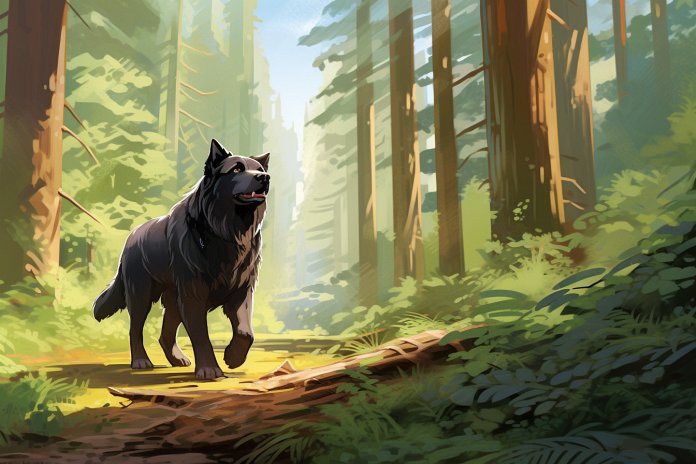
If you live in a vast wilderness, it’s likely that you and your dog enjoy exploring together. However, the presence of wildlife, including bears, can pose a danger. While you may know how to handle bear encounters, your dog’s heightened senses make them more alert to wildlife. In this article, we will discuss how dogs can sense bears and how to interpret their body language to stay alert in the wilderness.
Signs Your Dog Can Sense a Bear
Dogs have a better sense of smell and hearing than humans, making them more in tune with nature. If your dog senses a bear, they may exhibit signs such as sniffing, stiff tails, whimpering, whining, and becoming uneasy or anxious.
Other signs may include aggression, howling, barking, running away, growling, or having their back hair on edge.
The History of Dogs Hunting Bears
Dogs have been used in hunting for centuries, including hunting bears. Ancient civilizations like the Egyptians, Romans, and Greeks used dogs for hunting various animals. During the Middle Ages, specialized hunting dogs were bred for different tasks.
The Science Behind Dogs Sensing Bears
Dogs’ superior senses of smell and hearing contribute to their ability to sense bears. Dogs have a larger olfactory cortex and more receptors in their noses than humans. They also possess a vomeronasal organ that allows them to detect scents beyond our capability. Additionally, dogs have excellent hearing due to the muscles and flexibility of their ears.
Training Your Dog to be in Bear Country
While dogs can sniff out bear scents, it is not advisable to train them to hunt bears. Instead, it is recommended to train your dog to avoid bears. This can be done by keeping your dog leashed, staying on marked trails, remaining alert, and avoiding areas known for bear activity. Carrying bear spray while hiking is also recommended for added safety.
“Trust your dog’s senses – they can detect a bear before you even know it’s there.”

Tips & Things to Know
1️⃣ Pay attention to your dog’s body language: Dogs have a heightened sense of smell and hearing, making them more alert to wildlife, including bears. If your dog is acting funny, sniffing around, whining, or showing signs of uneasiness like a stiff tail or raised back hair, they may be sensing a bear nearby. Pay attention to these cues and take appropriate precautions.
2️⃣ Understand the signs of a bear encounter: In addition to body language, dogs may exhibit other signs that they sense a bear, such as anxious behavior, aggression, howling or barking, running away, or growling. Familiarize yourself with these signs so that you can respond appropriately and ensure the safety of both you and your dog.
3️⃣ Be cautious when hiking in bear country: If you live in a wilderness area with bears, it’s important to take precautions when hiking with your dog. Consider keeping your dog leashed, staying on marked trails, and avoiding areas known for bear activity. Training your dog to avoid bears rather than hunt them is recommended for safety reasons. Additionally, carrying bear spray can provide an added layer of protection in case of an encounter.
Frequently Asked Questions, Answered ✅
1. How can dogs sense bears and why are they better at it than humans?
– Dogs have an incredible sense of smell and hearing, allowing them to detect the sights, sounds, and smells of nature more effectively than humans. They may exhibit behaviors such as sniffing, stiff tails, whining, and becoming alert and uneasy.
2. What are some body cues that indicate a dog senses a bear nearby?
– Whining, guarding, listening intently, sniffing, having back hair on edge, and a stiff tail are some of the signs that may indicate a dog senses a bear nearby.
3. What are other signs that a dog may sense a bear?
– Other signs include displaying uneasy or anxious behavior, aggression, howling or barking, running away, and growling.
4. What is the history of dogs hunting bears?
– Dogs have been used for hunting, including bears, for centuries. Ancient civilizations such as the Egyptians, Romans, and Greeks utilized different breeds of dogs to aid in hunting large game. The practice of using specialized hunting dogs became more widespread during the Middle Ages.
5. What is the science behind dogs’ ability to sense bears?
– Dogs have a significantly larger olfactory cortex and a higher number of receptors in their noses compared to humans. They also have an additional organ called the vomeronasal organ, which allows them to detect a wider range of smells. Dogs can rotate and modify their ears to enhance their hearing abilities, making them more adept at sensing bears and other animals.